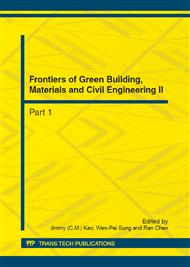p.1296
p.1300
p.1307
p.1311
p.1315
p.1320
p.1324
p.1329
p.1334
Seismic Response Analysis of High Pier and Long Span Rigid Framed Bridge under Non Uniform Excitation
Abstract:
Taking the Longtan River Bridge as the engineering background , the seismic response analysis of high-pier and long-span continuous rigid-framed bridge considering travelling wave effect is simulated by means of the great mass method . Conclusions are drawn under asynchronous and synchronous excitation respectively , between which comparison indicates that the seismic responses for the main beams of continuous rigid-framed bridge are decreased at various degrees , such as the longitudinal horizontal displacement . The travelling wave effects on the piers are also related to the characteristics and locations of the bridge piers and so on .
Info:
Periodical:
Pages:
1315-1319
Citation:
Online since:
August 2012
Authors:
Price:
Сopyright:
© 2012 Trans Tech Publications Ltd. All Rights Reserved
Share:
Citation:


